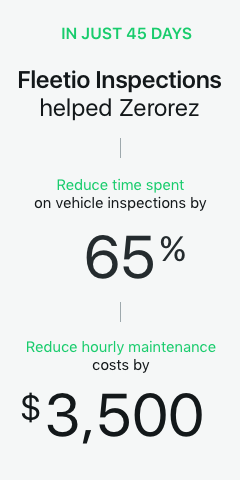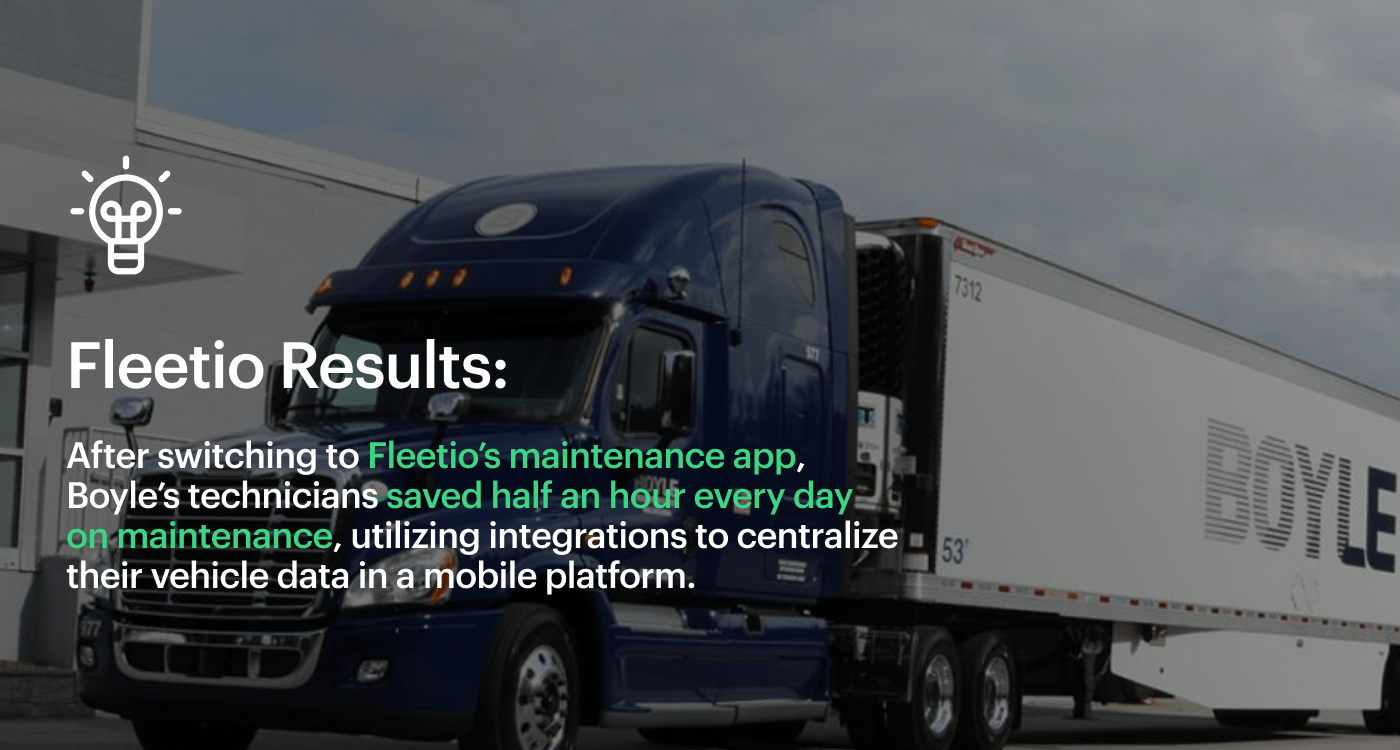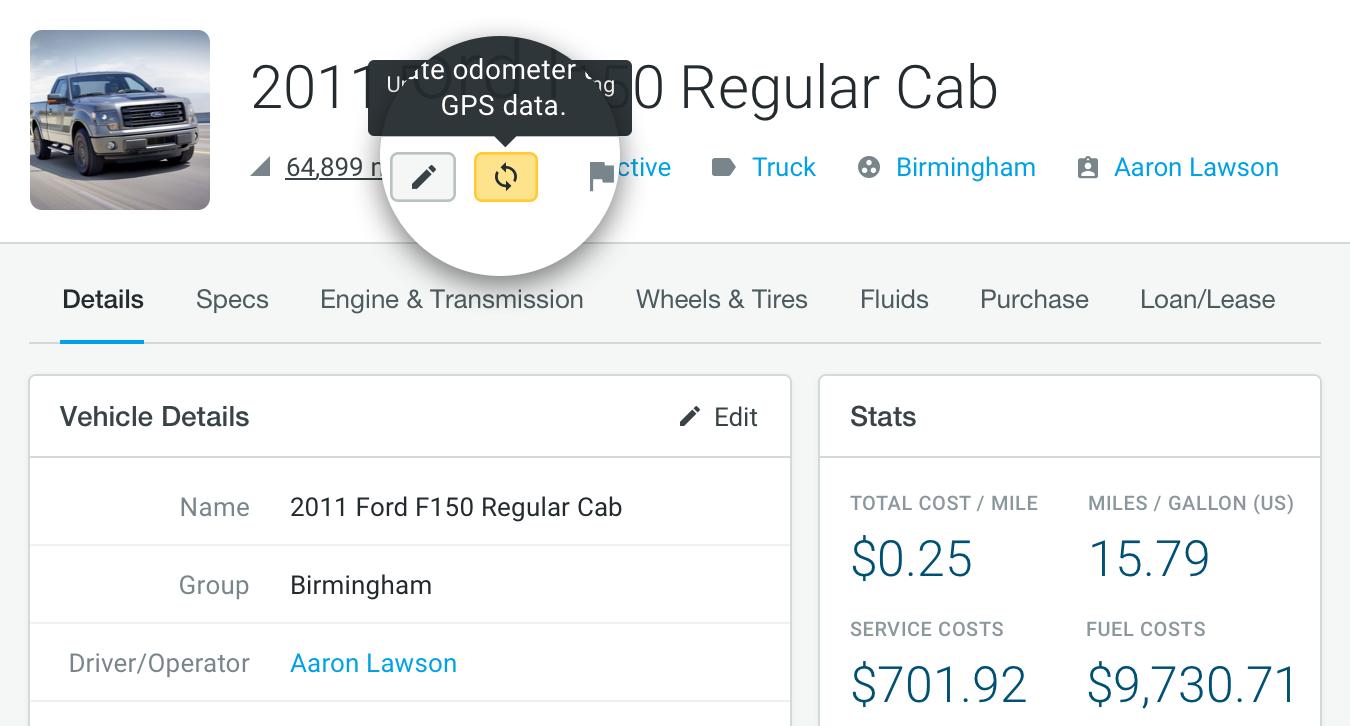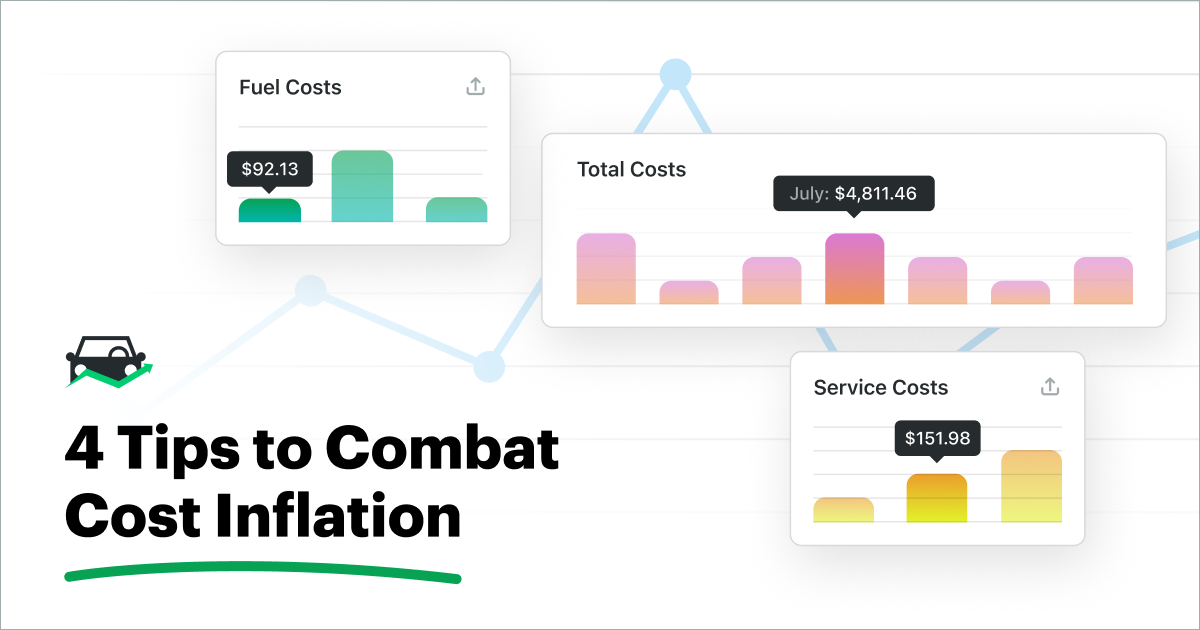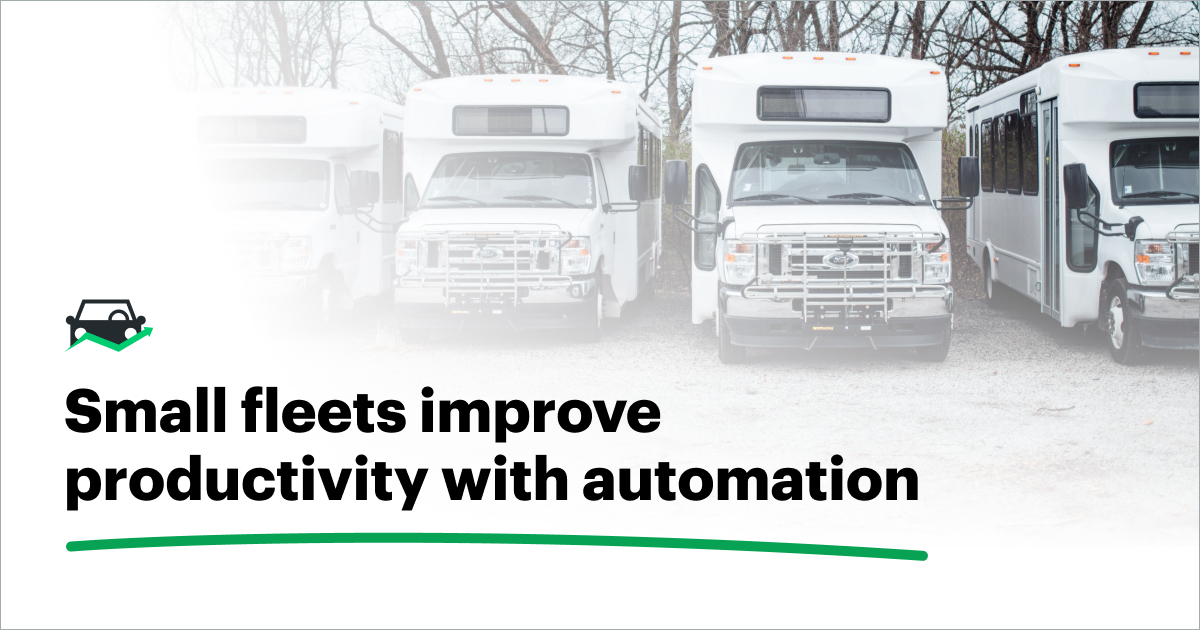Get rid of outdated practices and embrace modern software solutions to improve efficiency, streamline workflows and increase visibility and communication.

1. Prioritize Collaboration and Communication
Fleet management can take a village, and making sure everyone involved stays in the loop presents many challenges. Fleet management software syncs all of the team members involved in any operation – drivers, technicians, even in-house and outsourced maintenance providers – into a single platform, allowing fleet managers to solve issues from anywhere at any time.
Fleet management apps enable commentary across the platform, from providing clarity on a vehicle inspection to giving notes on work orders or service tasks, without a chain of phone calls or the delay of paper routing. In addition to boosting communication, a mobile platform keeps all vehicle information centralized in one location, giving you access to your fleet no matter where you are.
When teams are able to stay connected from anywhere, it reduces the time sink in between the reporting of a problem and the beginning of a solution, meaning assets spend more time on the road and less time in communication limbo.
2. Use eDVIRs Instead of Paper Forms
Pre- and post-trip driver vehicle inspection reports (DVIRs) help prioritize safety on the road and extend the life of your vehicles by preemptively identifying maintenance issues . In many cases, they’re required by law to keep your assets up and running.
But when inspections are conducted on paper, it creates a myriad of issues – they’re time-consuming, easy to misplace, hard to store and limit possibilities for action and communication. That’s where eDVIRs come in handy.
Using fleet management software to conduct inspections means that each driver can upload inspections right from their phone or tablet, finishing the process in a fraction of the time compared to paper. The digital aspect of eDVIRs gives rapid access to fleet managers and admins through an online dashboard as inspections are completed. Inspection forms can be customized to meet the needs of each vehicle type in your fleet, and details like photos and other supporting documents are available alongside each inspection.
As one of the nation’s largest cleaning companies, Stanley Steemer manages a fleet of thousands. When the team handled their process on paper, it could take over an hour to complete multiple vehicle inspections and even more time to manage the data entry from paper to computer. By handling inspections through Fleetio, Stanley Steemer can complete vehicle inspections in as little as 10 minutes, with no data entry required.
3. Streamline Your Maintenance Program
Keeping a tight rein on preventive maintenance can improve your fleet’s overall uptime and reduce the amount of time they spend in the shop when they do require work. With a streamlined fleet management system, fleet managers can schedule automated maintenance reminders, assign work orders to technicians as they come in, and approve repair requests in real-time – all right from their smartphone.
The key to building a solid maintenance program is thinking proactively, not reactively, to avoid downtime. For a trucking company like Boyle Transportation , downtime is not an option. Boyle specializes in transporting security-sensitive materials, and as one of the company’s tapped to assist in distributing Pfizer’s COVID-19 vaccine, unexpected breakdowns and lengthy maintenance can spell disaster.
4. Integrate GPS and Telematics
GPS tracking is more than just observing dots on a map; tracking driver behavior and trends can become valuable data points that can inform fleet managers on ways to improve their fleet’s overall performance. Integrating with your fleet’s telematics and GPS devices can lead to more efficient routing options and geofencing parameters, as well as greater visibility into factors like idle time and hours of service.
A good fleet management software has the ability to integrate with your fleet’s telematics devices so that you can visualize the data they provide alongside existing data about your fleet, giving you a bigger picture of your fleet operation as a whole. You can even automate notifications repair orders when DTC alerts or engine faults are reported, giving you immediate visibility into issues and improving your maintenance response time.
5. Analyze Your Total Cost of Ownership
Creating a more productive process means being able to measure financial impact on your operations as well. While you can attempt to track your expense data in separate spreadsheets, you risk losing time to inaccurate calculations, which can negatively impact your bottom line.
With a centralized platform like Fleetio, tracking and integrating your data in a fleet management system makes it significantly easier to keep a pulse on expenses and total cost of ownership by automatically calculating measurements like cost-per-meter.
A clear understanding of what is being spent to keep your fleet up and running allows you to make stronger, data-based decisions to maximize efficiency and ultimately, reduce costs.
6. Measure What Matters
Maximizing productivity only works to the extent that you can track it. Fleet management software isn’t just a storage base for fleet processes – it can also track important metrics around each process within your fleet, generating significant data out of your day-to-day.
Knowing how much time is taken to complete tasks like inspection and repairs, as well as tracking on-time service compliance rates, helps fleet managers get more granular with their operations and affirm that the efforts they make to stay productive result in actual productivity.
A good fleet management software comes packed with robust features that make it easy to break down what’s happening with your fleet every day and generate custom reports to analyze things like utilization, maintenance and performance.
7. Switch to a Centralized Fleet Management Platform
Each piece of productivity can be overwhelming when viewed in isolation. That’s why leveraging a comprehensive fleet management software is vital to addressing breakdowns in process and communication.
A solid fleet management system brings all of the facets of productivity into a single accessible platform. Using a platform like Fleetio allows you to track every aspect of your fleet, including:
- Inspections
- Maintenance
- Service reminders
- GPS and telematics tracking
- Expenses,TCO and reporting
Each of these processes can be entirely customized to your fleet, from eDVIRs and service programs specified to fit your vehicles to automated reminders workflows that keep your assets maintained and ready for the road.
By keeping everything in one place, you can begin to find new ways to scale your operations in sustainable, measurable ways without any of the hassle of spreadsheets and paper reports, all while making sure everyone stays informed and connected.
Ready to improve your fleet’s productivity? Start your free trial or request a demo today!

